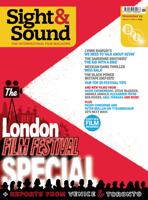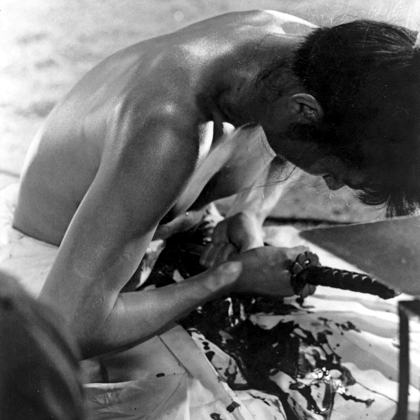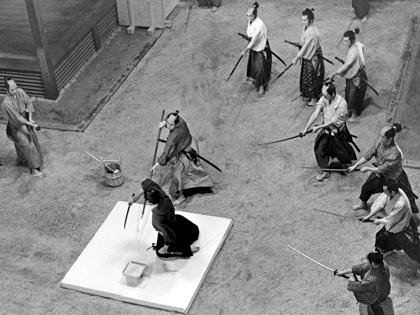Primary navigation


A fierce and thrilling critique of notions of honour, Harakiri is, says Michael Brooke, one of the greatest of all Japanese films
Harakiri (Seppuku)
Kobayashi Masaki; Japan 1962; Certificate 15; 133 minutes; Aspect Ratio 2.35:1
Eureka/Masters of Cinema / Region 2 NTSC DVD/Region B Blu-ray Dual Format; Features: Kobayashi Masaki interview, trailer, booklet
Criterion / Region A Blu-ray; Features: introduction by Donald Richie, interviews with Kobayashi Masaki, Nakadai Tatsuya and Hashimoto Shinobu, trailer, booklet
Kobayashi Masaki’s first samurai film is one of the genre’s major masterpieces, not least for its exploration and criticism of the ritual facades governing the samurai code of honour – if notions of honour can legitimately be applied to what is forensically exposed as a viciously hypocritical system that renders men penniless and children fatherless thanks to an unbending refusal to take context and individual circumstance into account.
It’s set in 1630, a time of peace that proves paradoxically disastrous for the samurai who contributed to the Tokugawa shogunate’s victory during prolonged civil conflict. Deprived of their very raison d’être, many former samurai have been forced to become wandering ronin, explicitly forbidden to take on any other kind of employment (one is seen fruitlessly queuing for a labouring job) and treated with widespread mistrust. Desperate to stave off starvation, they devise a scam that involves presenting themselves at the gates of the fortresses of the few extant clans, demanding their right as samurai to commit harakiri (or, more accurately, seppuku, the film’s Japanese title) with all the attendant pomp and ceremony.
In most cases, the supplicants are contemptuously paid off (which of course was their intended outcome), but on one occasion the Iyi clan’s senior counsellor Saito Kageyu (Mikuni Rentaro) decides to assert his authority in his leader’s absence by insisting that Chijiiwa Motome (Ishihama Akira) goes through with the ceremony, even when it becomes clear that not only does Chijiiwa not want to do it, but he even lacks the necessary equipment, having sold his two samurai swords some time earlier and replaced them with bamboo facsimiles. Unmoved, Saito insists that he use them instead.
This early scene and its barely watchable conclusion presents Kobayashi’s anti-feudal argument in kernel form, but the bulk of the surrounding narrative remains to be fleshed out by the older samurai Tsugumo Hanshiro (Nakadai Tatsuya). Saito initially assumes that he intends to pull off the same trick as Chijiiwa, but as Tsugumo gradually reveals his motives in lacerating detail, it becomes clear that he has a very different outcome in mind. A few drops of agreeably dark comedy (three supposedly fearless warriors all pull unexpected sickies for the same reason) leaven an inexorable accretion of human tragedy that turns positively Shakespearean well before the end.

Kobayashi’s control of this material is masterly throughout. Most of cinematographer Miyajima Yoshio’s widescreen compositions are, like Nakadai’s unnervingly calm basso delivery, deceptively measured and tranquil, the camera gliding serenely through the Iyi clan’s various rooms before coming to rest in the courtyard where much of the drama takes place. The ritualistic staging is deliberately contrasted with the horrors unveiled in flashback by Tsugumo’s deceptively calm narrative: after so much tension, the climactic swordfights come as cathartic relief.
The film’s production coincided with a revival of interest in traditional Japanese musical instruments that had fallen out of favour after the war, and Takemitsu Toru’s score is quite unlike that of Hayazaki Fumio’s more westernised accompaniments to earlier samurai films by Kurosawa and Mizoguchi. He makes particularly eloquent use of the biwa, or Japanese lute, whether plucked to emphasise individual gestures or strummed continuously as a background to a more elaborate set piece.
Eureka’s Masters of Cinema strand and the Criterion Collection are releasing Harakiri on Blu-ray more or less simultaneously on both sides of the Atlantic, presumably to take advantage of the imminent release of Miike Takashi’s 3D remake. Each edition is region-locked to its respective territory, and has been sourced from the same Shochiku high-definition master. Eureka has opted to present the material as supplied, while Criterion has made some small tonal adjustments and slightly cropped the image at the sides and bottom. Framing issues aside, the picture on both versions is superb. The opening shots of smoke swirling around a display of ceremonial armour topped with a fine-haired white wig (the hollowness of head and body a symbol of the rot at the Iyi clan’s heart) are demonstration-quality, and the rest of the film is all but immaculate.
Common to both releases is a 1993 interview with an affable but modest Kobayashi, conducted by his markedly more voluble younger colleague Shinoda Masahiro. The booklets are structurally similar if textually different, offering analytical essays by Philip Kemp (Eureka) or Joan Mellen (Criterion) and a Kobayashi interview (from 1963 or 1972, respectively). Unique to Criterion are video interviews with Nakadai and screenwriter Hashimoto Shinobu and an introduction by veteran Japanese cinema expert Donald Richie, while Masters of Cinema offers a supplementary DVD in the same package, duplicating the Blu-ray disc’s contents (Criterion’s 2005 DVD does the same job, but has to be purchased separately). But in either version, these discs offer a near-perfect showcase for what is still undoubtedly one of the greatest of all Japanese films.
13 Assassins reviewed by Christoph Huber (June 2011)
The last samurai: Alex Cox on Shimura Takashi, Kurosawa’s other favourite actor (June 2006)
Gohatto reviewed by Philip Strick (August 2001)
Ghost Dog The Way of the Samurai reviewed by Xan Brooks (May 2000)